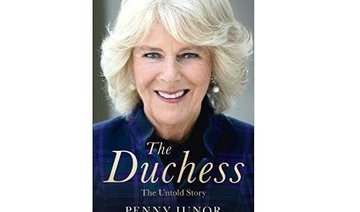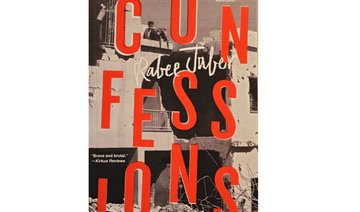I wish there were words to express the different shades of love. Saying that I loved this book sounds so banal and somewhat cliché. You love a book, you love a cup of coffee, you read the book, you drink the coffee and voila! You move on to something else. Impossible! I could not stop thinking about Neslishah and her extraordinary destiny.
Neslishah, with her beauty and character, is a woman that you cannot forget. A mere glimpse at her and you know who she is. Born on February 4, 1921, Princess Neslishah Osmanoglu, the granddaughter of the last Ottoman sultan, Vahideddin, and the last caliph, Abdulmecid Effendi, was the last Ottoman princess whose name was recorded in the register of the Ottoman dynasty before Ottoman rule was abolished on Nov. 1, 1922.
“It is not only one of the first detailed biographies of a member of an imperial ruling family whose empire had been terminated, but it also illuminates the history of the Middle East, and in particular of the Egyptian royal family. And it is the story of the last Ottoman sultan, the last caliph, and their families, and in a way the sequel to my book ‘Sahbaba,’ first published in 1998,” explains Murat Bardakci, a Turkish journalist and historian, who is also the author of several books on the Ottoman imperial family.
Neslishah was only three when she left Istanbul on March 11, 1924 with her mother, Sabiha Sultan, the youngest daughter of Sultan Vahideddin, and her sister, Hanzade. Sultan Vahideddin was the first to leave. When the sultanate was abolished, he lost his empire and his throne, and he left for San Remo. In his memoirs, he said: “We did not run away. We took the Hijra of the Prophet as an example when he moved from Makkah to Madinah and we left with the intention to return.”
One hundred and fifty-five members of the Ottoman family were obliged to leave the country. Many of the older members of the family were not aware of the gravity of their situation and believed they would be called back. Other members such as Sabiha Sultan, Neslishah’s mother, were more realistic. They knew that a return from exile was impossible and they would be facing difficult years abroad.
Sabiha Sultan immediately understood the significance of this historic change. In her unpublished memoirs she wrote: “Today is the day of the foundation of the republic. Our family has done its duty and passed on … The empire was (a) different era, but it belonged to the Turks just as today’s republic belongs to the Turks.”
Neslishah followed her mother’s example. She rarely spoke to the press. She believed that the Ottoman dynasty was part of history and the Ottomans living in Turkey should not seek to become celebrity socialites. She strongly criticized this kind of attitude as both undignified and not in conformity with the Ottoman tradition.
Neslishah had only blurred memories of the night they left Turkey for Switzerland. However, as she rarely went out, traveling on a train was an adventure and she remembers racing up and down the train’s narrow corridors with her cousins. Three days later, Sabiha and her daughters were greeted at the station by her husband Omar Faruk Effendi, whose father was now the caliph Abdulmecid Effendi.
The caliph and his entourage lived in denial not realizing the profound political changes which had taken place in Turkey. They firmly believed that they would eventually be called back. Sabiha was already worrying about the outstanding expenses they were paying at the Grand Hotel. In a letter she wrote to her husband’s aide de camp, she complained that “Switzerland is today one of the most expensive countries and the Grand Hotel is highway robbery.”
Abdulmecid left with his family for Nice where he settled into the Villa Xoulces. But the relationship between the caliph and his son were difficult and Omar Faruk Effendi decided to live in a separate house in which Sabiha contributed to the purchase.
Their new home was a large apartment in the Prince de Galles building not far from the caliph’s house. Neslishah remembers that they lived a simple and quiet life.
“Most of the imperial princesses had no idea of what was going on in the world. They had spent their whole lives enclosed in palaces and mansions, having no contact with the outside world. My mother, for instance had never seen unpeeled potatoes before her expulsion from Turkey. The first time she saw a cauliflower in the kitchen she thought it was a flower! Later on, my mother learned quite well what life was all about, but the older princesses were incapable of doing so.”
Neslishah also remembers a funny anecdote: “Lunch was always at midday and dinner at seven-thirty. There were two sittings in the dining room. At the first sitting, my grandfather and my grandmother would sit opposite each other — his secretary Huseyin Nakib Bey, my aunt Durrushevar and I were also at the table. There were always flowers in the middle of the table. Now and then my grandmother, without my grandfather noticing, would make these bouquets larger and larger for the following reason: My grandmother was rather plump and suffered from diabetes, but her appetite was quite voracious. The doctors would advise her to eat less and to diet, but she would not listen. She pretended to eat the diet food that was specially prepared for her, because she was afraid of her husband, but hiding behind the flowers, she also ate what was cooked for us.”
Neslishah’s father entertained a lot and the allowance he received from his father was spent on constant dinner parties. Her mother could no longer make ends meet: “We wore the sweaters that my mother would knit for us … there were times when my skirt would be torn, and at school I would wear it back to front to conceal the hole.”
Neslishah was taught more at home than in school. “I was told that to be a princess is a profession, and for years they taught me this at home …The most important among the things that were forbidden was to show weakness. It was considered shameful to show your weakness. You were not allowed to laugh out loud, and if you were to cry it had to be done secretly; no one should see your sadness or your tears.”
Neslishah lived in Nice for 15 years then her father, fearing a war between France and Germany, decided to move his family to Egypt where her mother wished to find suitable husbands for her daughters. They arrived in Alexandria in late 1938.
After Neslishah broke off her engagement to Prince Omar Toussoun, she finally agreed to marry Prince Abdel Moneim, the son of His Highness Khedive Abbas Hilmi. The marriage took place on Sept. 26, 1940. Despite her reluctance to marry Prince Abdel Moneim, Neslishah and her husband were happily married for 40 years. In 1947, Prince Abdel Moneim took Neslishah and her two children on trip to the country that she left when she was three-years-old.
When Neslishah arrived in Istanbul, she did not realize that so many people had come to see her. “I really did not know what to do! Should I wave, should I not? After all, we had come to Istanbul with special permission from the government and I did not want to make a misstep. Then some of the ladies started to cry and of course I cried too … I was crying on one hand and on the other my heart was pounding with excitement.”
One day a reporter asked Neslishah how she learned to speak Turkish so well. “I was truly irritated: ‘I am Turkish, sir,’ I replied. ‘Do not forget that I am a Turkish woman.’”
Neslishah’s mother, Sabiha Sultan, the daughter of Sultan Vahideddin, was the first member of the Ottoman family to return to Turkey. She arrived in Istanbul on August 26, 1952. That same night she wrote: “Such a blessing to be here in Istanbul, my one and only city … I understand her, and she understands me.”
Five years later, Neslishah obtained her Turkish nationality. In the spring of 1959, she and her husband were acquitted of all charges brought against them after the military coup in Egypt. They no longer wished to stay in Egypt. She was destined to be exiled once more. After spending time in Paris, she returned to Istanbul where she lived in from 1964 until her death in 2012.
Book Review: A princess and her extraordinary destiny
Book Review: A princess and her extraordinary destiny

What We Are Reading Today: ‘Crossing Thoughts’

Author: Sultan Ayaz
“Crossing Thoughts” is a fantasy novel in English by Saudi author Sultan Ayaz, published in 2017.
Ayaz’s novel is about humans defending their homeland against demon oppression. It is about the eternal fight between humanity and demons, and the person who stands between them.
The story begins with Drake, a child who lives a peaceful life with his family in a small town. However, a demonic attack destroys the village, but Drake somehow survives.
Three characters emerge: Aria, Ray and Amber, who study the nature of elements at the Grand College of Elements in the Kingdom of Iora, one of three kingdoms suffering demonic oppression. They learn to employ elemental magic as a weapon against their demonic opponents.
Aria (wind element user), Amber (fire element user) and Ray (thunder element user) end up fighting a sea demon and are discovered by a mysterious man called Soul, who admires their powers and helps them train to become “demon slayers,” to free humans from oppression.
There are many fight scenes in the storyline using magic and elements, and the book is full of drama, plot twists and terror.
What I liked about the narrative is how easy it is to read and follow, and the development of the world building —from the village to the Kingdom of Iora.
The female characters in the novel shine brighter and have distinct styles, making them more intriguing to read about, and each possesses a particular power.
It might be confusing for some readers that the story begins with Drake’s perspective and then cuts to the story of Aria, Amber and Ray. However, the more you read, the more intriguing the female storylines become.
The book has received four-plus star ratings on the Goodreads website and is simple enough to read in one sitting.
In 2020, Ayaz became one of the first Saudi novelists to have a fiction work in English published overseas when Olympia Publishers, a British publishing house, purchased the rights to “Crossing Thoughts.”
The novel is also set to be adapted into a Manga comic by Manga Arabia.
What We Are Reading Today: When the Bombs Stopped

Author: Erin Lin
Over the course of the Vietnam War, the United states dropped 500,000 tonnes of bombs over Cambodia—more than the combined weight of every man, woman, and child in the country.
Fifty years after the last sortie, residents of rural Cambodia are still coping with the unexploded ordnance that covers their land.
What We Are Reading Today: Father Time

Author: Sarah Blaffer Hrdy
It has long seemed self-evident that women care for babies and men do other things.
Puzzled and dazzled by the tender expertise of new fathers around the world— several in her own family—celebrated evolutionary anthropologist and primatologist Sarah Blaffer Hrdy set out to trace the deep history of male nurturing and explain a surprising departure from everything she had assumed to be “normal.”
What We Are Reading Today: ‘Breaking the Mold’

Authors: RAGHURAM G. RAJAN AND ROHIT LAMBA
India’s economy has overtaken the United Kingdom’s to become the fifth-largest in the world, but it is still only one-fifth the size of China’s, and India’s economic growth is too slow to provide jobs for millions of its ambitious youth.
In “Breaking the Mold,” Raghuram Rajan and Rohit Lamba show why and how India needs to blaze a new path if it’s to succeed.
What We Are Reading Today: ‘The Things You Can See Only When You Slow Down’

Author: Haemin Sunim
“The Things You Can See Only When You Slow Down: How to be Calm in a Busy World” offers advice on how to find inner peace in today’s busy world.
The 300-page book, published in 2017, was written by Haemin Sunim, a Korean Buddhist monk, and has sold more than 3 million copies.
The author underwent monastic training in South Korea before spending seven years teaching Asian religions at Hampshire College in the US. The book elaborates on the wisdom he gained from personal experiences as a Buddhist monk.
One of the book’s strengths is its simplicity. The author’s writing style is easy to understand as he presents his ideas in bite-sized chapters, each focusing on a different aspect of mindfulness.
Whether he is writing about the meaning of silence or of gratitude, Sunim’s words resonate with a quiet authority which prompts the reader to pause and reflect on their own lives.
In addition, the book is filled with amazing imagery that complements the stories. The beautiful drawings contribute to Sunim’s narrative and create a sense of serenity and peace.
The author emphasizes the concept of enjoying the little things in life to the fullest, such as drinking a cup of tea in the morning, taking a walk in nature, or having a thoughtful conversation with loved ones.
Slowing down allows people to notice the happiness hidden in even the simplest tasks and moments, he claims.
He also encourages readers to be kind to themselves and offers advice on how people can develop a deeper sense of self-acceptance and self-love, fostering emotional well-being and resilience.
Sunim’s wisdom and compassion are clear. His words remind readers that despite the noise and distractions of the modern world, true happiness can be found when they slow down.


















